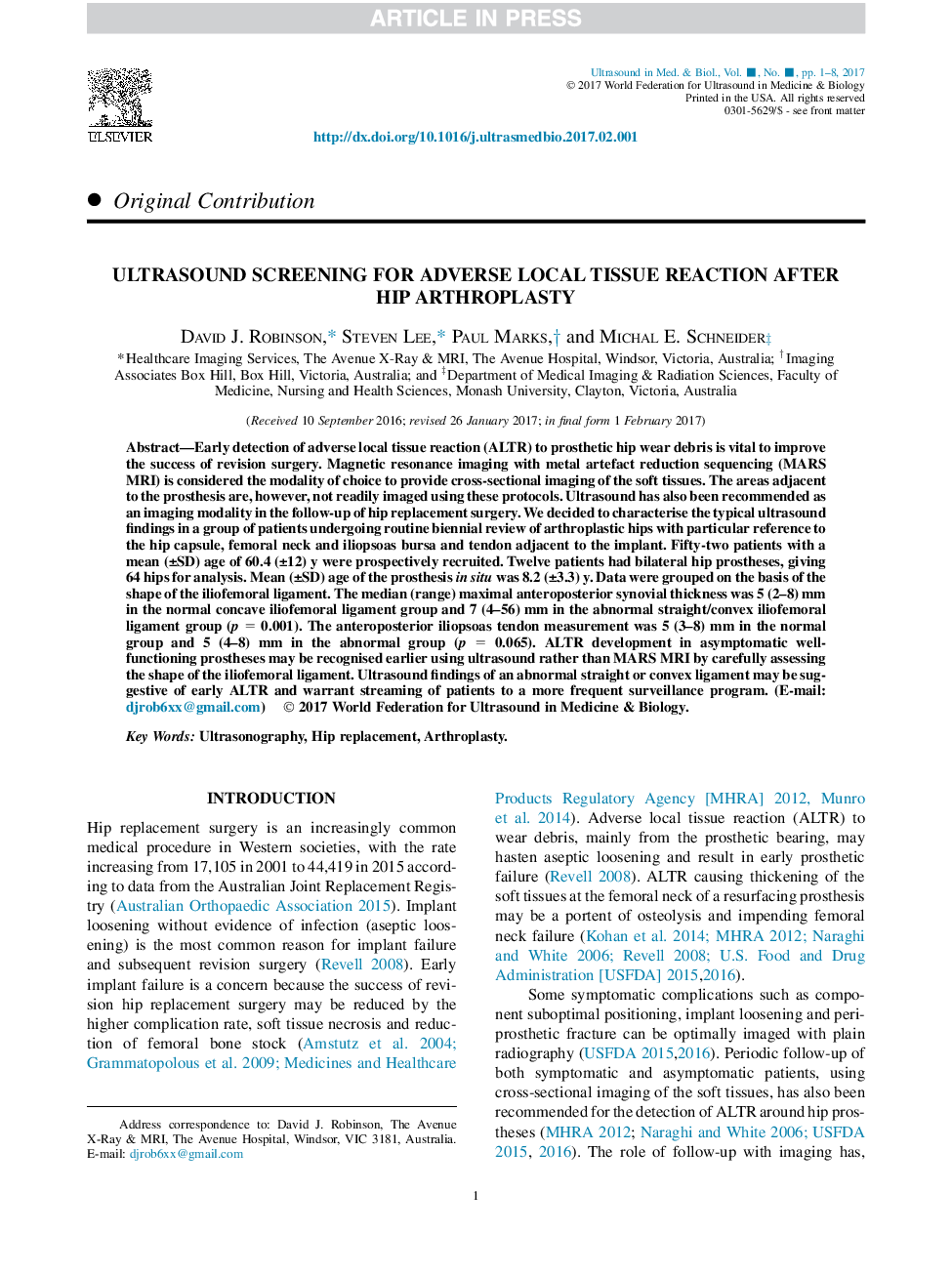| Article ID | Journal | Published Year | Pages | File Type |
|---|---|---|---|---|
| 5485658 | Ultrasound in Medicine & Biology | 2017 | 8 Pages |
Abstract
Early detection of adverse local tissue reaction (ALTR) to prosthetic hip wear debris is vital to improve the success of revision surgery. Magnetic resonance imaging with metal artefact reduction sequencing (MARS MRI) is considered the modality of choice to provide cross-sectional imaging of the soft tissues. The areas adjacent to the prosthesis are, however, not readily imaged using these protocols. Ultrasound has also been recommended as an imaging modality in the follow-up of hip replacement surgery. We decided to characterise the typical ultrasound findings in a group of patients undergoing routine biennial review of arthroplastic hips with particular reference to the hip capsule, femoral neck and iliopsoas bursa and tendon adjacent to the implant. Fifty-two patients with a mean (±SD) age of 60.4 (±12) y were prospectively recruited. Twelve patients had bilateral hip prostheses, giving 64 hips for analysis. Mean (±SD) age of the prosthesis in situ was 8.2 (±3.3) y. Data were grouped on the basis of the shape of the iliofemoral ligament. The median (range) maximal anteroposterior synovial thickness was 5 (2-8) mm in the normal concave iliofemoral ligament group and 7 (4-56) mm in the abnormal straight/convex iliofemoral ligament group (p = 0.001). The anteroposterior iliopsoas tendon measurement was 5 (3-8) mm in the normal group and 5 (4-8) mm in the abnormal group (p = 0.065). ALTR development in asymptomatic well-functioning prostheses may be recognised earlier using ultrasound rather than MARS MRI by carefully assessing the shape of the iliofemoral ligament. Ultrasound findings of an abnormal straight or convex ligament may be suggestive of early ALTR and warrant streaming of patients to a more frequent surveillance program.
Related Topics
Physical Sciences and Engineering
Physics and Astronomy
Acoustics and Ultrasonics
Authors
David J. Robinson, Steven Lee, Paul Marks, Michal E. Schneider,
